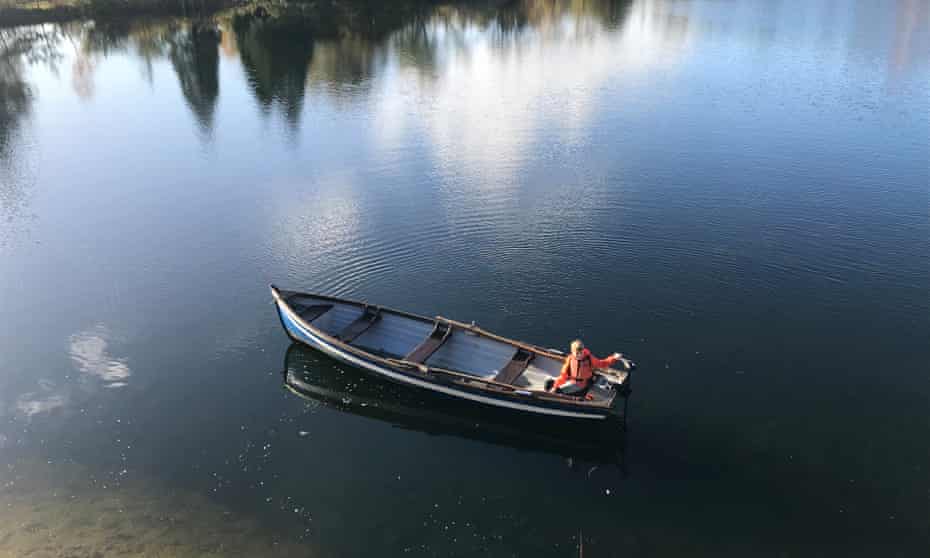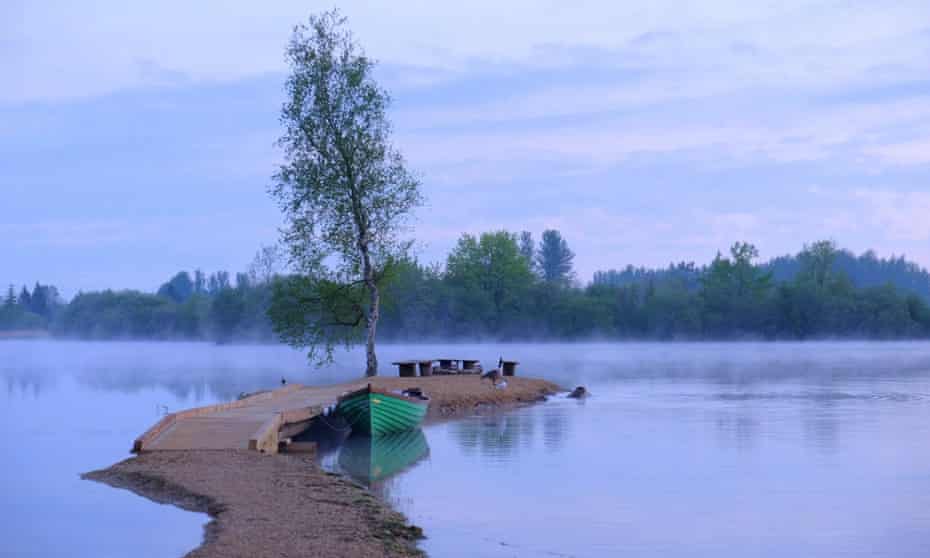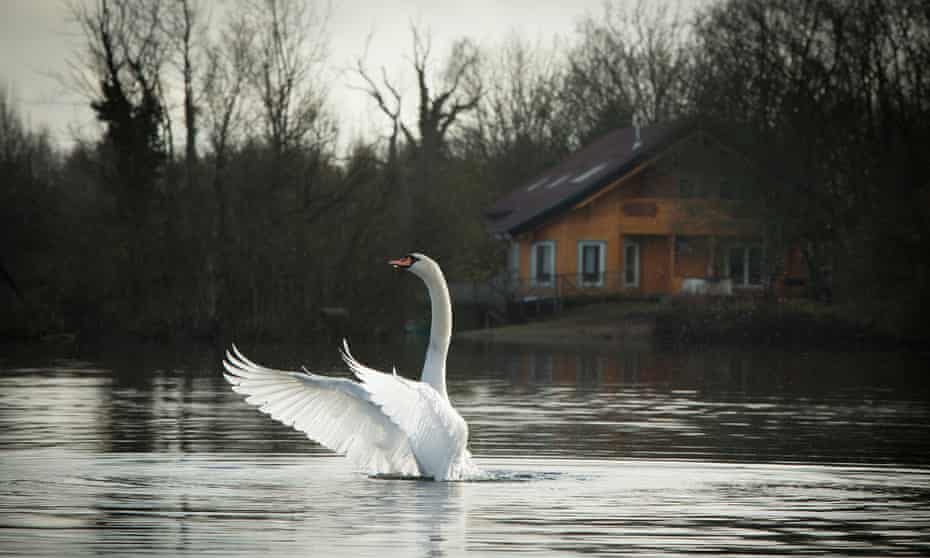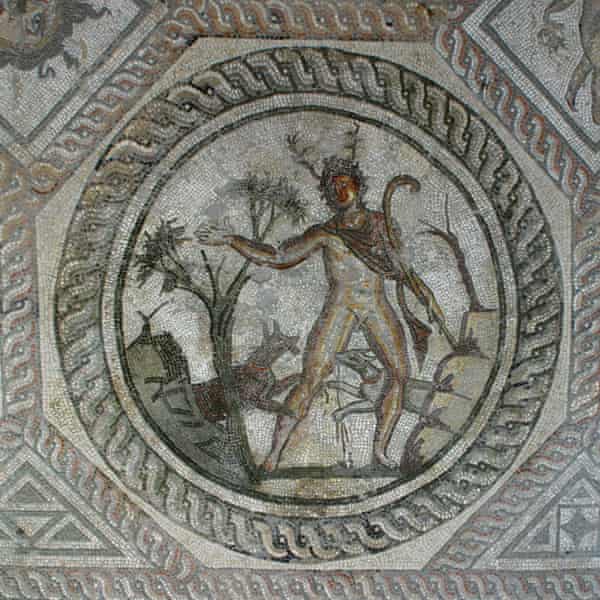To country people Cows are mild,
And flee from any stick they throw;
But I’m a timid town bred child,
And all the cattle seem to know.
I cringe to think that on my recent trip to the Cotswolds I hid behind a tree while walking through a field of cows that were staring at me menacingly. But at least I’m in good company. TS Eliot loved walking in the wolds – his visit to the abandoned manor of Burnt Norton inspired the first poem in his Four Quartets. But his aversion to cows and “their stupid gaze” was so strong that he wrote an entire poem on the subject: The Country Walk ends with a reference to taking “sanctuary in friendly oak or apple tree.”
The meadow where I gave the cows a wide berth wasn’t any old meadow – it’s called Trewsbury Mead, and it’s the site of the source of the River Thames. I’d walked there assuming I’d find some form of water – a stream, a trickle? But the spring is seasonal and in dry weather the only sign of the field’s significance is a large stone engraved with just legible writing. Before the stone was placed there in 1974, the spot was marked by a statue of old Father Thames. A wooden signpost next to it points to the way to the Thames barrier, 184 miles away.

In some ways this area, with its hedgerows and fields, its honey-coloured villages and towns, has changed little since TS Eliot enjoyed his rambles with his friend and muse Emily Hale.
Except for the lakes. There probably weren’t many manmade lakes here in the 1930s. Now there are 170, which was news to me. I thought the Cotswolds was all gentle hills and pubs with photos of David Cameron pulling pints, but a parcel of land just south of the Cotswolds Area of Outstanding Beauty is dotted with stretches of open water, providing a home to vast numbers of wintering and breeding birds, as well as watersports and other activities for human visitors. The lakes are former gravel pits, most of which were dug about 50 years ago. Over the years the used pits have been bought by private buyers or given over to nature reserves, and today the Cotswolds Water Park Trust is charged with balancing wildlife conservation and recreation.

Several of the lakes, such as the Cotswolds Country Park and Beach, offer multiple activities as well as food and drink; others have been given over to specific sports, like Lakeside where you can book waterskiing and wakeboarding lessons or get dragged behind a speedboat on a giant inflatable. It’s quite a contrast to Log House Holidays, where we were staying. On the western edge of the Water Park, just outside the village of Pool Keynes, LHH is a serene wildlife oasis with just eight holiday cabins, each with its own lake-front. After buying an ex-gravel pit and 53 hectares (130 acres) of land in the 1980s, Anthony Edmondson set about planting 50,000 trees, sowing wildflowers and planting reeds in the water, creating habitats for an impressive array of bird- and wildlife. Thanks to these rewilding efforts the estate is a designated Special Site of Scientific Interest.
Entering the site through an avenue of spruce felt like the start of an adventure, a fitting introduction to a landscape that was inspired by the outback cabins of Canada. Edmondson bought the property with money he’d earned working in the silver mines of the Yukon. During his time off he liked to stay in the wilds, and wanted to bring a sense of wilderness back to the Cotswolds.

We arrived at sunset when the sky was streaked pink and the still lake shimmered gold in the last of the light. By the time we’d unpacked the car, a perfect half moon hung above the sequoias on the far bank. We couldn’t have asked for a better welcome. Perhaps it was the excitement of escaping the grubby streets of south London in a year when our travels have been so curtailed but we spent the next half hour walking around exclaiming at every new discovery – “We’ve got our own boat!”; “Hey, there’s a fire pit!” and “Look, there’s a swing over here!”
It was half an hour when the “healing power of nature” that I’ve been reading about since the start of the pandemic really hit home. Everything 2020 had thrown at us felt like it was being lifted from our shoulders by the wind that whispered through the trees.
The hot tub helped too – not one of those unsightly blue plastic numbers but a deep wood-clad tub set on the terrace to take in the view.
Anthony’s inspiration may have been the Canadian outback but the cabins were imported from Finland – the chunky logs and underfloor heating sourced from a water pump provide so much warmth I was pulling layers off the minute I stepped inside and decided against lighting the woodburner.

We were there at half-term when the estate was in full autumn glory. We woke up to a view of all the season’s colours reflected in the black lake. I could have sat there for hours but a 10-year-old boy announced it was time to try out the rowing boat. We set off from our little jetty in search of the otters that Anthony’s son had old us had been spotted near our cabin. No doubt the otters heard us coming as they were nowhere to be seen. Instead we watched a heron fly low over the water and enjoyed the view of our cabin, its mirror image rippling in the water. The beauty of having our own inlet on the lake was that it was safe enough for my son to take the boat out by himself, a glorious moment of freedom for a city child.
The log cabins are expensive, and you have to pay extra for a hot tub, and to hire paddleboards and kayaks, but the appeal of isolation and a chance to reconnect with nature is so strong, thanks to the pandemic, that demand for LHH has never been higher. Like many popular cottages and campsites in the UK, the cabins are almost fully booked for 2021 as holidaymakers stick with the security of a UK trip amid the seemingly endless uncertainty of foreign travel. This is one to nab for 2022.

Many guests arrive with a car load of food and drink and stay on site for the duration of their stay. I was tempted to do the same, but when it started to rain we decided on the wet weather stalwart of British holidays – the nearest museum. LHH is just a few miles south of Cirencester, where the Corinium museum houses an impressive array of Roman artefacts excavated in and around the town, including beautiful mosaics. After wandering around the remains of what was once one of the largest amphitheatres in Britain but is now just earthen mounds, our visit to the museum helped add some detail to what life must have been like under Roman rule. Since our visit a new gallery devoted to the pre-Roman era has opened, a highlight in what has been an annus horribilus for the museums sector, in particular for smaller regional venues such as the Corinium.
That evening, we treated ourselves to dinner at the Potting Shed in Crudwell just over the border in Wiltshire, our first meal out in months. The meat eaters in the family went with black pudding scotch egg, pheasant schnitzel, confit duck. I opted for the cod with crab and prawn butter.
Back at the cabin the hot tub beckoned. A feast, a soak … It was almost Roman, though they probably weren’t scared of cows.
• The trip was provided by Log House Holidays (loghouseholidays.co.uk). A cabin sleeping four costs from £620 for four nights midweek in 2021, or £675 in 2022.





